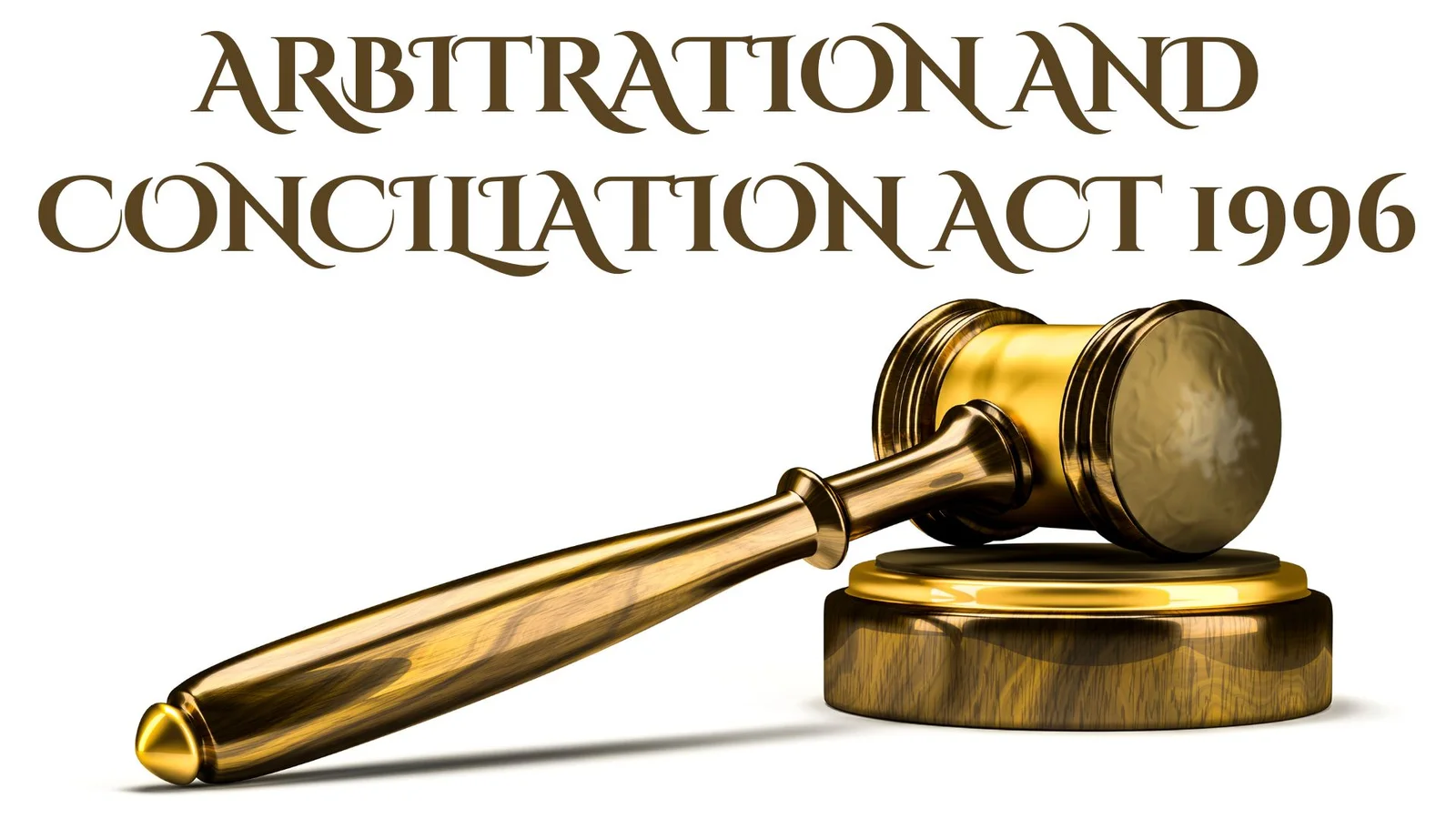The Arbitration and Conciliation Act 1996 is a significant law in India that decides how disputes are solved through arbitration and conciliation. This Act replaced the old Arbitration Act of 1940. This process enabled India to reach international standards when it came to arbitration laws. This was specific to the UNCITRAL law. Continue reading to learn all about the salient features of the Arbitration and Conciliation Act 1996.
Arbitration and Conciliation Act 1996
The 1996 Act serves as a modern framework for resolving disputes outside of traditional courts. Aiming to make the arbitration process more efficient, it works for fairness and transparency. The Act promotes alternative dispute resolution methods. These are often faster and less expensive when compared to court resolutions. By aligning with international norms, the Act enhances India’s position in global commerce and trade.
Arbitration is a procedure where two parties decide to resolve their issue by referring it to a neutral party. This is known as the arbitrator. This Act delivers an organized style to arbitration. This includes covering everything from appointing arbitrators to conducting hearings and issuing awards. The Act also includes another method known as conciliation. This involves a conciliator who helps parties reach a mutually acceptable agreement.
One of the fundamental features of this Act is its pro-arbitration bearing. This bounds the role of courts in arbitration matters. This particular approach encourages parties to resolve their issues through arbitration without any interference from the judicial system. Along with this, the Act allows for the acknowledgment of both domestic and international arbitral awards. This ensures the decisions are treated as legally binding.
Also read: POCSO Act: Comprehensive Guide to Child Protection in India
Structure of the Act
The Arbitration and Conciliation Act 1996 is divided into four different parts. Part I includes Sections 2-43. This part deals with domestic arbitration and it’s primarily based on the UNCITRAL Model Law. It puts down the general provisions for arbitration proceedings in the country. The second part, known as Part IA includes Sections 43A to 43M. The section focuses on the establishment and functions of the Arbitration Council of India. The Council aims to promote and facilitate arbitration in the country.
Part II includes Sections 44-60. The Section deals with the enforcement of foreign awards. This includes facilities related to the New York Convention and the Geneva Convention. These are essential for international arbitration. Part III consists of Sections 61-81, which portrays the legal framework for conciliation. This provides guidelines for how conciliation proceedings ought to be conducted. Finally, Part IV consists of Sections 82-86. This includes supplementary provisions that support the overall framework of the Act.
Salient Features of the Arbitration and Conciliation Act 1996
The Act includes some salient features that facilitate its workings. These are elucidated below.
Scope and Application
The Act implies a form of arbitration, be it domestic or international. It can include legal disputes, commercial agreements, and civil cases.
Arbitral Tribunal
When parties decide to resolve their disagreements through arbitration, an arbitral tribunal is established. This tribunal can carry one or more arbitrators. A binding decision will be submitted, which is known as an arbitral award.
Also read: Juvenile Justice Act, 2015: Care & Protection for Children
Arbitration Agreement
Section 7 elucidates that two parties create an arbitration agreement to submit their issues to arbitration. They must provide this agreement in writing. It can be part of a contract or a separate document.
Number and Appointment of Arbitrators
Section 10 argues that parties can pick any odd number of arbitrators. If they cannot come to a consensus, the parties will appoint a single arbitrator. Along with this, the Act delivers a process for assigning arbitrators. The Act also allows for challenging an arbitrator’s appointment if there are any signs of their partiality.
Disclosure by Arbitrator
Section 12 requires arbitrators to inform about any potential conflicts of interest. This includes any relationships or interests that could affect their independence. Along with this, it includes their capability to commit time to their arbitration.
Conduct of Arbitration Proceedings
The Act ensures that arbitration authorities conduct proceedings fairly. Parties can present evidence, make arguments, and question witnesses. Civil procedure rules do not firmly administer the proceedings. This flexibility permits the arbitrator to modify the reports to fit the needs of the case. The Act empowers arbitrators to take temporary actions such as granting injunctions or protecting property. This ensures that the arbitration process runs smoothly and safeguards the rights of the parties.
Powers and Obligations of Arbitrators
The Act provides substantial authority to the arbitrators to manage the matters effectively. They have the authority to regulate their own jurisdiction and the legitimacy of the arbitration agreement. This ensures that they can address any preliminary issues before proceeding. They can also administer oaths to different parties and witnesses. Along with this, arbitrators can issue interim measures to protect the interest of the parties while the arbitration is going on. Most importantly, they have the authority to decide the admissibility and relevance of the evidence. They must deliver reasoned awards, explaining the basis of their decision. The arbitrator determines and allocates the cost of arbitration between the two parties.
Time Limit for Arbitral Awards
Section 29A of the Act sets specific time frames to issue arbitral awards. The arbitral tribunal issues the awards within 12 months from the completion of the pleadings, thereby settling the issues on time. At times, the parties may mutually approve to extend this limit by 6 months. This allows for some flexibility while still promoting efficiency in the matter.
Fast-Tracked Arbitration
Section 29B also mentions a fast-track arbitration, which the Act designs to expedite the process. Fast-track arbitration allows parties to resolve their issues within 6 months, making it a quick and easy process. This method involves simplified procedures. They do this to reduce delays, making it an attractive option for parties seeking quick solutions. Fast-track arbitration has gained recognition in India due to its swift measures in resolving disputes.
